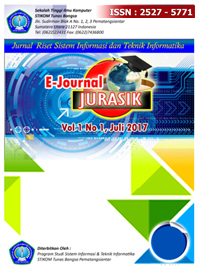Pendekatan Pengembangan Metaheuristik dalam optimisasi kombinatorial
Abstract
Full Text:
PDFReferences
A.M. Geoffrion (1972). A Generalized Benders Decomposition, J. Op-tim. Theory Appl., 10 (4), 237–260
Bienstock D, Computational study of a family of mixed-integer quadratic programming problems, Mathematical Programming, 74 (1996), pp. 121–140.
Bonami P, Kilinc M, Linderoth J. 2009. Algorithms and software for convex mixed integer nonlinear programs. Technical report #1664, Computer Science Department, Univ. of Wisconsin-Madison.
C. D’Ambrosio, A. Frangioni, L. Liberti, A.Lodi. Experiments with a Feasibility Pump approachfor non-convex MINLPs. In: P. Festa(ed) Proceedings of the 9th Synposiumon Experimental Algorithms (SEA 2010), Lecture Notes in Computer Science, vol. 6049. Springer, Berlin (2010)
C. D’Ambrosio, A. Frangioni, L. Liberti, A. Lodi. A storm of Feasibility Pump for non-convex MINLP. Tech. Rep. OR-10-13, DEIS, Universita di Bologna (2010)
Danna E, Rothberg E, and C. LePape, Exploring relaxation induced neighborhoods to improve MIP solutions, Mathematical Programming, 102 (2005),pp. 71–90.
Fernandes F P, Costa M F P, Rocha A M A C, Fernandes E M G P. 2016. Improving efficiency of a multistart with interrupted Hooke-and-Jeeves filter search for solving MINLP problems. Int. Conf. on Computational Sciences and its Applications, pp. 345-358.
Flores-Tlacuahuac A and L. T. Biegler, Simultaneous mixed-integer dynamic optimization for integrated design and control, Computers and Chemical Engineering, 31 (2007), pp. 648–656.
G. Nannicini and P. Belotti, Local Branching for MINPs. Technical Report workingpaper, CMU, 2009.
G. Nannicini, P. Belotti. Rounding-based heuristics for non-convex MINLPs. In: P. Bonami, L. Liberti, A. Miller, A. Sartenear (eds). Proceedings of the European Workshop on MINLP. CIRM, Marseille, France (2009).
Kaya O, Urek B. (2016). A mixed integer nonlinear model and heuristic solutions for location, inventory and pricing decisions in a closed loop supply chain. Competers & Operations Research, 65, 93-103.
Kim J S, and Edgar T F. (2014) Optimal scheduling of combined heat and powerplants using mixed-integer nonlinear programming, Energy, 77, 675-690
M. A. Duran and I. E Grossmann, An Outer-Approximation Algorithm For a class of Mixed-Integer Nonlinear Programs, Mathematical Programming 36 (1986) 307.
M. Fischetti, F. Glover, A. Lodi. The Feasibility Pump. Mathematical Programming A 104(1), 91-104 (2005).
DOI: http://dx.doi.org/10.30645/senaris.v1i0.135
Refbacks
- There are currently no refbacks.
 








